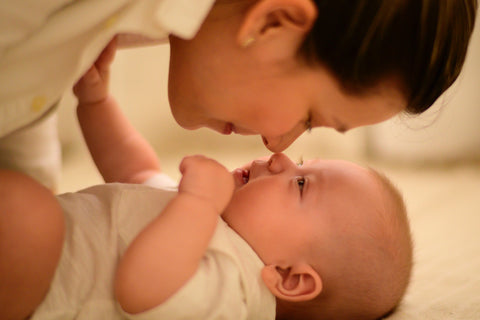Mammas have been swaddling their babies for a thousand years, perhaps beginning in Central Asia in 4000 BC and spreading to Eurasia through nomadic trade. [1]
Sadly, swaddling your baby can appear to be fine art. Wrap this, fold that. It can be perplexing, especially if you're up at 2 a.m. for a feeding. But at the same time, it also seems like a miracle cure for a fussy baby. Learning and practicing the art of wrapping up your child will help you get some much-needed rest.
What Is Swaddling?
Swaddling is the act of securely wrapping a blanket or muslin cloth over a newborn's body. It will make babies relax, feel healthy, and comfort them by making them feel like they are still in their mother's womb.
When and How Much to Swaddle?
As soon as you get back from the hospital, you may begin swaddling your new baby. It will help the first few weeks to be somewhat less stressful for both you and the baby!
Wrapping older babies may not be necessary. Most babies are done by three months, but don't worry if yours is six or nine months old. There is no upswing! We promise you will not take your ten-year-old child to day camp wearing a colossal Star Wars wrap-up blanket.
Allow your babies to take their time and listen to your instincts. Moms always have the correct approach!
Is it Important to Swaddle a Baby?
Truly. Swaddling, in addition to keeping your baby calm and promoting good sleep, is a safety precaution to prevent injuries from occurring when your baby is sleeping.
Wrapping your baby in a traditional sleep swaddle can sound strange at first, but once you understand the benefits of wrapping up, it will become an essential part of your child's sleep routine.
Be Careful When Swaddling—Safety Tips!
For generations, swaddling has become an essential aspect of baby care. While it has several benefits, you must ensure that you are using it correctly to avoid danger or inconvenience to your child. To stay safe, take the following precautions:
- To prevent overheating, swaddle your baby in 100 percent organic cotton and breathable fabric rather than polyester or wool wraps.
- Avoid wrapping too tightly. Swaddling the newborn tightly locks the child's legs together and straight, increasing the risk of hip problems.
- Do lay the baby down on his back.
- Place the baby on a solid mattress and cover with a single sheet. Cushy mattresses, sofa cushions, and plush carpets can look good in pictures, but they may obstruct your baby's breathing and block their face.
- Be sure that whatever you're using to wrap up won't be coming loose. Babies and loose cloth are a risky combo.
- Stop swaddling the baby once the little one can rollover.
- Don't double up blankets while wrapping. The extra thickness will cause your baby to overheat. It will also make it easier to slide, increasing the risk of suffocation.
Wrapping Up!
If you're looking forward to a new baby soon, prepare your Swaddles now, and you'll have fewer sleepless nights once the baby arrives. It is not too late if your baby is already a couple of weeks old!
Happy Swaddling!

References

